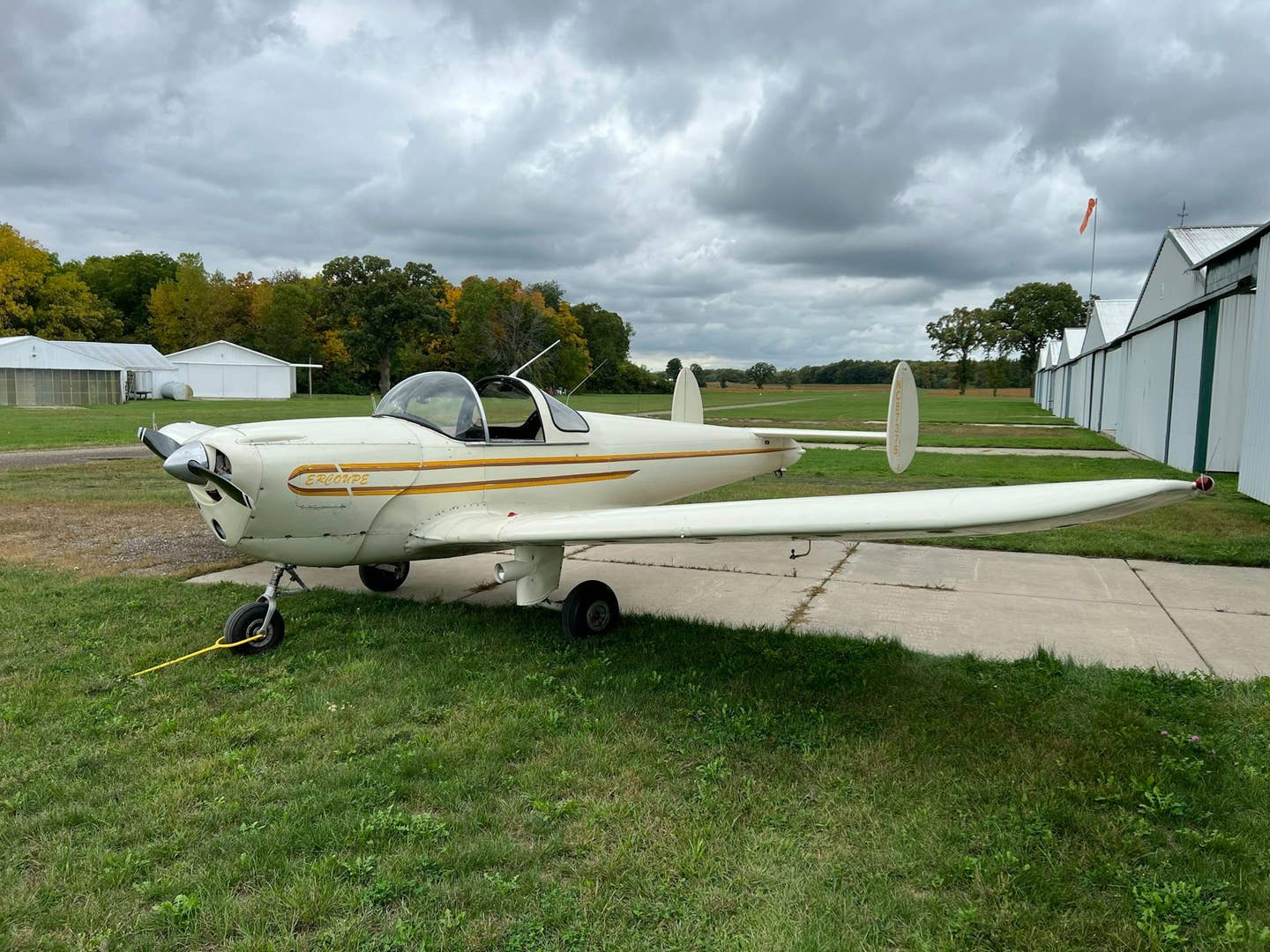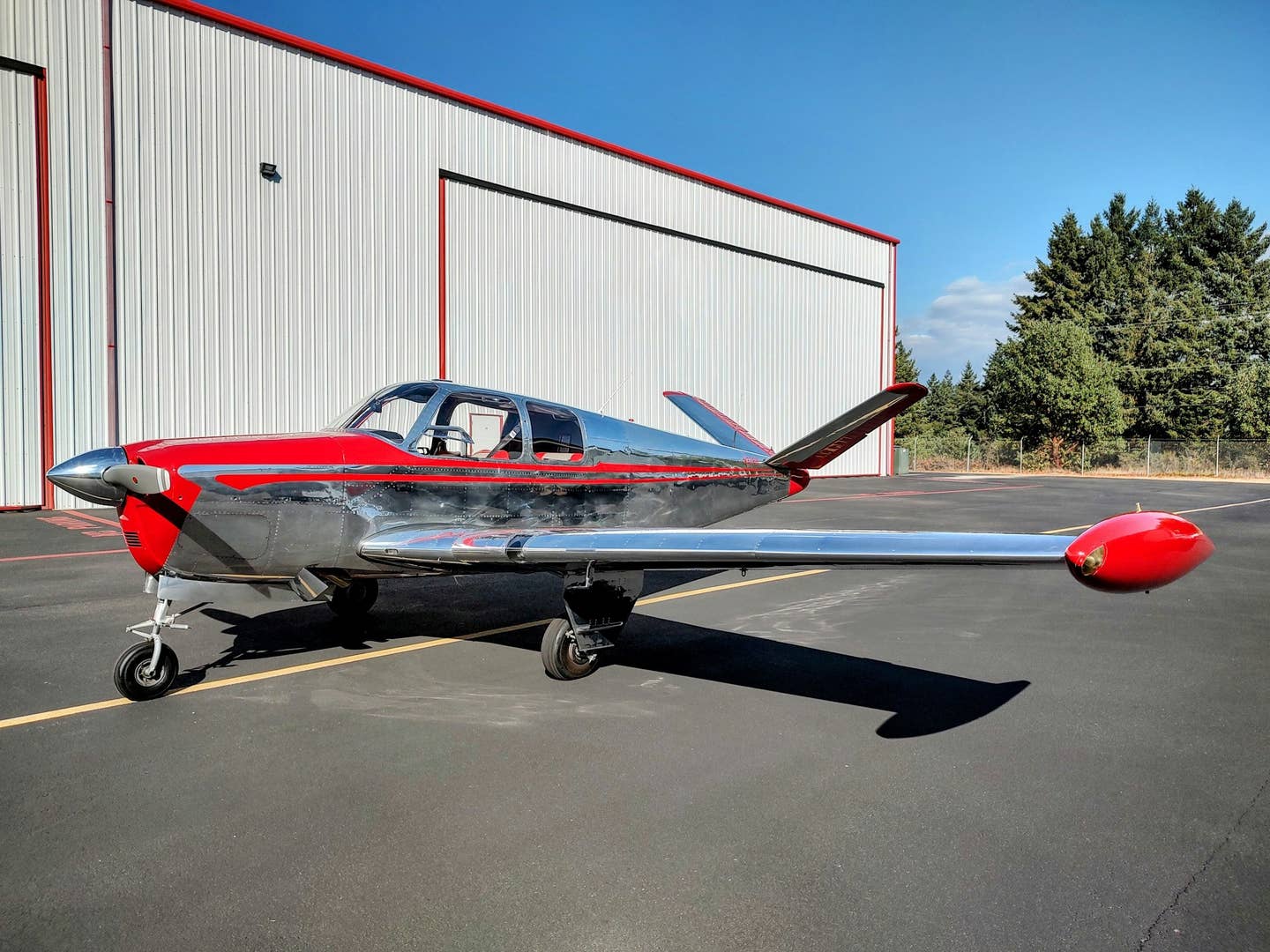Our Top 8 Game-Changing Airplane Engines
Each one of these aircraft engines represented a break from orthodoxy, and each had a big impact on the world of personal flying.

A host of engines power our airplanes today, but a few innovations moved the needle for general aviation.
Like it or not, the fortunes of aviation, including light, personal flying, are linked to the technologies that provide the motive force for our gravity-defying feats. It's nothing new. Finding suitable propulsion was arguably the Wright brothers' biggest obstacle leading up to, and even long after, their Kitty Hawk adventure. The one specialist they had on retainer was none other than internal combustion engine pioneer Charlie Taylor. Taylor's first aircraft engine, built to order for the Wright Flyer, weighed 160 pounds and produced 12 horsepower, a tremendous power-to-weight ratio at the time. While it seemed revolutionary then, aircraft engines would get unimaginably more capable over the next few decades as new technologies leap-frogged the old and helped drive aircraft performance and design to (literally) new heights.
Here are seven engines---and one motor---that changed the game.
READ MORE: Rotax 912
Gnome/Le Rhône Rotary
Even by the start of the 1910s, it had long been known that weight is the enemy of flight. Power, conversely, was an airplane's best friend. So, the quest to build ever-lighter and more powerful engines was the critical pursuit as designers around the world sought to create engines to power new, truly practical aircraft.
Liberty L-12
The Liberty L-12, which emerged toward the end of WWI as a real player, is a fork-in-the-road product, one that marks the divergence of lower-powered engines from engines that would get bigger and more powerful. The L-12 is actually a family of engines, with six- and eight-cylinder models produced, as well. But it was the L-12, a water-cooled, V-12 engine that opened people's eyes to the potential of gas piston engines. With an engine able to produce 400 horsepower, nearly four times that of the most popular rotary engines of the day, it became clear to designers that the future of aviation power and, hence, aviation itself, was boundless.
Wright Whirlwind
In light aviation before the era of the air-cooled opposed aero engine, the radial engine was the dominant engine type. This is in part because United States military planners voted strongly for the type, and their hunch paid off handsomely, as a number of radial engines from relatively compact to staggeringly powerful were installed in aircraft from trainers and personal travelers to the biggest bombers. If you want to understand the difference between the potential of the engine types, just picture a radial-engine-powered Beech Staggerwing of 1945 next to an opposed four-cylinder Beech Bonanza of 1945.
The radial engine that started a flurry of development of this still-much-beloved-but-now-largely obsolete engine type, the Wright Whirlwind was a radial engine whose development dates back to the early 1920s, when the Navy forced Wright's hand into developing this type. It started as a nine-cylinder radial, but the company soon started building lower-power, lower-weight models of five and seven cylinders, too, for lighter aircraft.
The advantage of the radial engine was that it was air-cooled, and with the cylinders right out there in the open, they naturally got plenty of air, which eliminated a dangerous failure mode, the loss of liquid cooling, whereas air cooling had no such risk factor; as long as you were flying, the airflow was there.
There were disadvantages, too. Radial engines have a big footprint, so they are inherently more draggy than inline or V-configuration engines, and as they got larger and more powerful, they were forced toward larger applications, too.
Radials by Pratt & Whitney (the Wasp Junior), Continental, Jacobs and Wright itself, with its Cyclone series, were all mass produced for aircraft between the wars and, at a lesser rate, beyond, being outfitted into some of the most beautiful and prized light aircraft ever built before giving way to opposed engines and a new, more modern world of light personal flying.
Continental A40 Piper Cub Engine
The increasingly urgent need for greater speed and payload demanded that commercial and military applications go with large radial engines or, less frequently, inline or V-configuration designs. But for light aircraft, those layouts didn't translate well, as they were relatively heavy, complex and expensive to produce. The engines that caught on were the series of four-cylinder opposed, air-cooled models built by Continental Motors and based on the Piper (nee Taylor) Cub. The 40-hp, magneto-spark engine weighed around 155 pounds, and its compact shape made it the perfect small engine to power what would be known within a few years as a groundbreaking design, C.G. Taylor's E2 Cub, which morphed into the much-beloved Piper J-3 Cub.
It was clear from early on that 40-hp was passable but not ideal, so the A40 grew into ever-increasingly powerful and only slightly heavier versions, the ultimate expression of which were the 90-100-hp C-90 and A-200 models, which produced an additional 50-60 horsepower for only an additional 15-25 pounds of dry weight.
A very similar engine, the Lycoming O-145, emerged shortly thereafter, and it, like its Continental competitors, was perfectly suited for the light planes of the day, including the Piper Cub, into which the Lycoming was also fitted. It's hard to find details on how many of these engines were produced during their heyday, but the numbers likely are far greater than 100,000, perhaps, apiece.
Together, the two companies dominated the light plane engine marketplace for decades, and they still provide most of the engines for new-manufacture light aircraft today, all of which are based on these original designs.
Lycoming 540/Continental 520/550-Series Engines
It might seem odd to break off the Continental and Lycoming six-cylinder engine models from the four-cylinder air-cooled opposed models they were based upon, but their impact on light aviation has been huge. The two companies' star engines, the 550-series for Continental Aerospace Technologies and the 540-series for Lycoming, have given developers of high-performance single- and twin-engine aircraft a go-to motor for delivering reliable power for some of the most noteworthy aircraft of the modern era, including the Beech Bonanza, the Cessna 210 Centurion and the Cirrus SR22. While conventional wisdom holds that these engines have stood still as time progressed, that's not really true. The technology behind them, including turbocharging and greatly improved manufacturing processes, have made them more reliable and powerful over the years.
Rotax 912
One of the most revolutionary engines in light aircraft history, the Rotax 912 has gone into hundreds of different models of certificated and sport aircraft. A four-cylinder, hybrid cooling (air and liquid) engine, the first 912, introduced in 1989, boasted 80 horsepower of smooth, efficient power that helped catapult sport aviation to another level. Previously, two-stroke engines, many of them manufactured by Rotax, ruled the segment. The company has manufactured an estimated 75,000 aircraft engines, many of them derived from their popular engines for snowmobiles.
The 912 was launched the same year, 1989, as a new, advanced two-stroke design, the 582, which is still in production. It was the pinnacle of Rotax's line of two-stroke engines designed for ultralight and very light sport aircraft. It has been standard equipment on more than 225 different ultralight and very light aircraft.
Producing 65 horsepower, the engine is a tidy fit for two-seat ultralights (most of which are simply small Experimental aircraft and not technically "ultralights" at all). For those who don't want to mix oil and fuel, the 582 features optional oil injection. The liquid-cooled engine has an integral reduction drive because its normal rpm range of power---max power is delivered at 6,500 rmp---is far too fast for prop efficiency.
The introduction of the 582 gave developers of very light aircraft a low-maintenance, more reliable and more powerful alternative to existing small engines, and in so doing, it helped launch the Light Sport Aircraft segment and regulations.
But it was the 912 that helped deliver on the promise of sport aviation. Since 1989, the company has developed follow-on models, including more powerful naturally aspirated and turbocharged models that today with the 915 iS go up to around 150-hp.
The 912 is around 33% more efficient than conventional gas piston engines, and it can run on auto fuel, as well as 100LL.
Thielert Centurion 1.7
The latest update to light GA aircraft that has had much impact was the Thielert Centurion 1.7, introduced by Diamond aircraft in its DA42 (then called the Twin Star) in the early 2000s. The engine is an extensive conversion of a Mercedes automobile engine. It was the first successful diesel aero engine, though in this case, "success" is a word to be used with numerous qualifications.
The four-cylinder, 135-hp, turbocharged, Jet-A-burning engine has numerous advantages, but its most compelling is its great fuel efficiency, in many applications up to 40% more efficient than gas piston engines of similar power rating. It also, as you just read, uses Jet-A fuel, which is widely available around the world and in many places far cheaper than avgas, not to mention that Jet-A is naturally unleaded. And because it's turbocharged, the engine maintains its rated power to far higher altitudes than its gas piston competitors can.
But the introduction of the engine was a disaster, with low time-before-overhaul times for critical components, poor reliability on top of that and spotty support, at least initially, from the airframe maker. Thielert itself declared insolvency, and Diamond took the extraordinary step of creating its own engine manufacturing subsidiary, Austro Engines. Thielert engines, now much improved, are produced in the United States by Continental Aerospace Technologies, though they have not had a strong uptake rate in the retrofit market, at least not yet. But given the aero diesel engine's promise and demonstrated advantages over gas piston engines, many still believe its day will come at last.
Electric Engines
At least to some degree, it's not accurate to call electric propulsive devices "engines." They are actually "motors" because, unlike engines, they don't produce the energy that they convert into motion. Then again, the terms have become almost interchangeable, to the point that MIT's guidance on the subject is that the two terms are, for all intents and purposes, interchangeable these days.
The future of flight at this point looks to be electrically driven, so it would stand to reason that electric motors will be the new objects of study and fascination for pilots in the same way that Merlins and Double Wasps have been up to now. But it's not likely to happen. Electric motors take electricity that's stored elsewhere and translate it to a spinning prop. They are dirt-simple compared to even the most rudimentary gas piston engine. Maybe the new figureheads of aviation will be awesome new technology batteries? Yeah, that's not likely to happen either, though it doesn't mean we won't be happy to have them in our lives.

Subscribe to Our Newsletter
Get the latest Plane & Pilot Magazine stories delivered directly to your inbox






